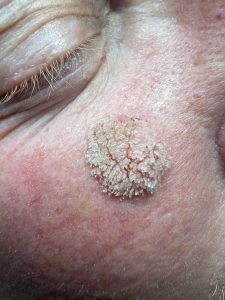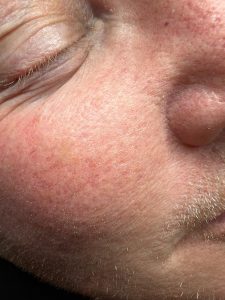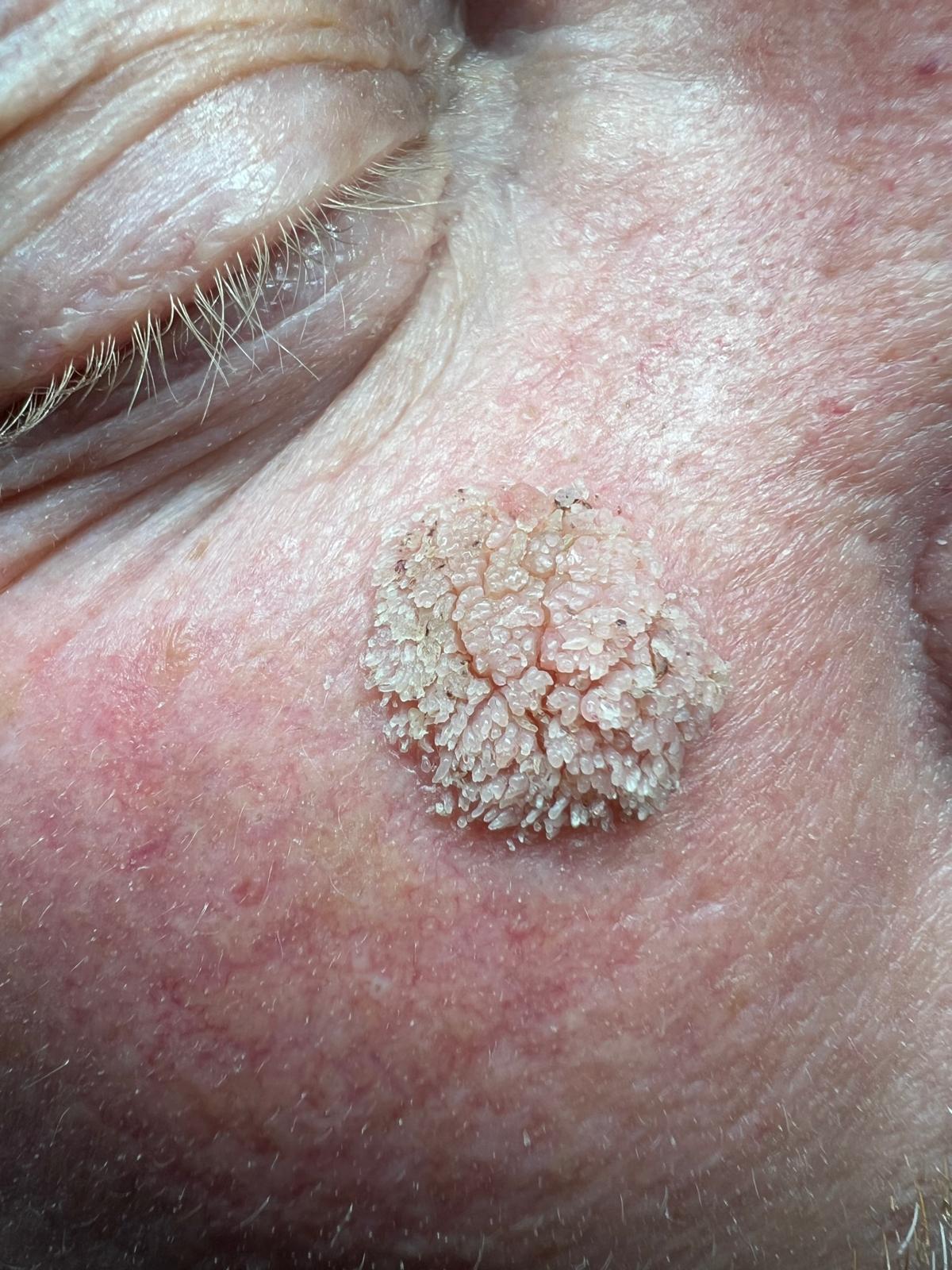Filiform Wart: Before & After Treatment
As a practitioner, I always enjoy showcasing before-and-after results for those considering treatment. It provides a clear visual understanding of how effective treatment can be and helps patients envision the potential improvements in their own skin post-treatment.
While every case is unique and healing processes vary from person to person, I am especially pleased with the result I achieved for Trevor, a wonderful gentleman I recently had the pleasure of treating. Trevor came to the clinic seeking help for a large filiform wart on his face. He had previously consulted with his GP, who confirmed the wart’s diagnosis but told him it was purely cosmetic and that no treatment would be offered. Unfortunately, this is a common scenario for many patients dealing with blemishes that are considered non-medical and, therefore, not covered by NHS treatment.
For those of us with blemishes, this can be a frustrating experience, as it leaves many people unsure where to turn for help. Thankfully, this is where private treatment options come in, offering relief and results for those who need it most.
Here is an image of the filiform wart before treatment:

And here is the result six weeks post-treatment:

As you can see, there is little to no visible evidence of the wart’s presence, which has been life-changing for Trevor. The wart’s location on his face had caused him some self-consciousness.
What Are Filiform Warts, and Why Do We Get Them?
Filiform warts are a type of benign skin growth caused by the human papillomavirus (HPV). They typically appear on the face, particularly around the eyelids, nose, or lips, and are characterized by their long, narrow, and often finger-like appearance. These warts are more common in adults.
The virus that causes filiform warts is contagious, and while it can spread through direct contact, certain factors such as a weakened immune system, skin trauma, or environmental conditions can increase the likelihood of developing them. Although these warts are harmless in terms of their medical impact, they can cause emotional distress, especially if located in visible areas of the face. Many people, like Trevor, find that the appearance of these warts can affect them.
Conclusion
Filiform warts may be considered cosmetic by medical professionals, but the emotional and psychological impact they can have on individuals is significant. If you’re struggling with a similar condition, don’t hesitate to explore treatment options. A simple procedure can often result in remarkable improvements, as demonstrated in Trevor’s case. If you have any questions or would like to discuss your own treatment options, feel free to contact me.
And finally in Trevor’s words…
To book your blemish consultation now in either my Colchester or Chelmsford clinic click here.

